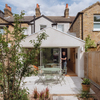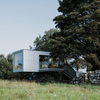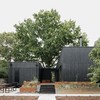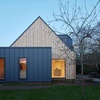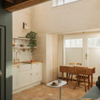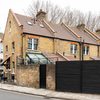Dun Guaidhre, Mull
Subscribe now to instantly view this image
Subscribe to the Architects’ Journal (AJ) for instant access to the AJ Buildings Library, an online database of nearly 2,000 exemplar buildings in photographs, plans, elevations and details.
Already a subscriber? Sign in
Harford_Cross_Architects-09VJ92XQY3SWALC09VJ92XQY3SWALC_Alexander_Baxter_HC_Croig_Feb23_40
Photos by Alex Baxter Download Original
Originally a fisherman’s cottage, Dun Guaidhre was abandoned before being reused as a sheep refuge, then basic camping style accommodation.
The client decided to improve its fabric to make it more comfortable and accessible without losing the simplicity in the way of living the cottage had always provided. H-CA has preserved the existing character of the cottage, reflecting not only its original use, but also its history during the twentieth century. Existing fabric has been left untouched where it still functions and alterations made only where they make significant improvements. This is due to the wish to be as sustainable as possible, but also to continue the way this building had been simply and modestly adapted through its long life. The interior has been designed to retain the open quality of its single volume, essentially as one habitable space. The functions are distinguished by the differing aesthetic qualities of each area. The living area is open to the rafters with exposed, painted stone walls. The bedroom has a low ceiling at roof tie level and is fully panelled with sustainable birch ply. A curtain allows this area to be separated from the living space. All services are located on the back wall where there are no windows and the cottage sits closely to the hill behind. Openings and doors to these are designed to be discreet to retain a sense of calm in the small space. A wood burning range is fitted in the living area: the sole means of cooking, providing warmth, and hot water via its back boiler. The furniture and fittings have been carefully chosen within the sustainable design principles: reclaimed ships light fittings, a re-used bathroom sink, taps and items of furniture. Door and cupboard latches and pulls are all designed and hand made by H-CA.
Data
- Begun: Jan 2020
- Completed: Jan 2022
- Floor area: 28m2
- Sector: Residential
- Total cost: £40,000
- Funding: Private
- Tender date: Jan 2020
- Procurement: Informal exchange of letters between builder and client.
- Address: Croig, United Kingdom
Professional Team 
- Architect: Harford-Cross Architects
- Client: Private
- Main contractor: Ben Wynne Williams
















